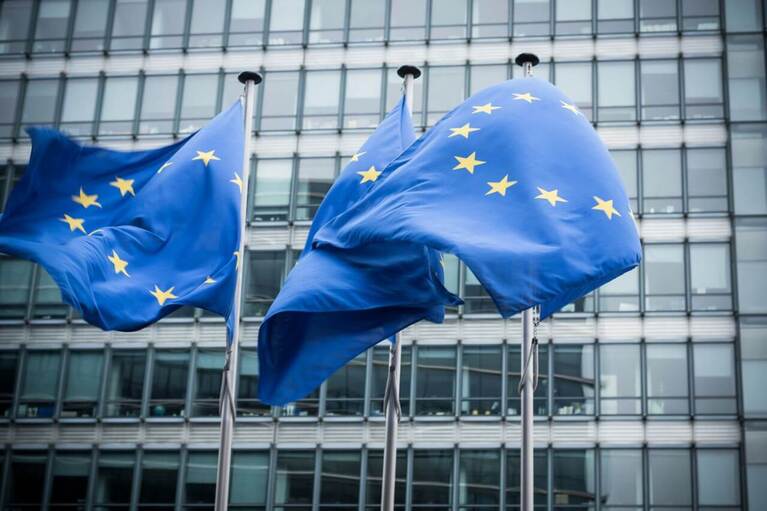2024 was a year of significant social, political and economic upheaval, bringing new pressures – and potential opportunities – in global markets. Find out how European stocks performed in 2024, and what 2025 could hold.
Snap elections in Germany: hope for stability?
Germany’s industrial sector is facing mounting pressure as the collapse of the traffic light coalition threatens to derail crucial projects. Whether the minority red-green government can implement measures like reducing electricity costs for industry without a parliamentary majority remains uncertain. With shrinking industrial production and labour shortages, Germany risks falling further behind globally.
The breakdown of the coalition in early November 2024 has triggered snap elections for February 2025. This could be a positive development if the election delivers a clear result and a business-friendly government that relaxes the debt brake to enable new investments. Initial measures could be introduced by mid-year, although their impacts might only emerge later in the year. For now, investors are largely focused on the current situation; perhaps an oversight, given that markets typically anticipate developments three to six months ahead.
Trump and the Ukraine war: uncertainty and hope
Donald Trump’s return to the White House in January 2025 is expected to bring political uncertainty back to the global stage. Markets are particularly nervous about his trade policies and approach to the Ukraine war. Trump has declared his intention to end the conflict by the end of 2025, raising hopes for a ceasefire and peace negotiations.
A potential resolution to the Ukraine war could significantly impact energy prices. A more stable oil and gas market could ease inflationary pressures, boosting European companies' profit margins, while easing geopolitical tensions could stabilise EU export markets.
China: subdued growth with recovery potential
China’s economy remains a concern, but while excess inventories are still being worked through, Beijing’s monetary and fiscal policies could show results by the second quarter of 2025. A recovery in China would be critical for global demand and European businesses, particularly export-dependent sectors such as automotive and machinery manufacturing.
Improved economic data from China could boost Europe’s stagnating stock markets. However, Trump’s announced tariffs on China, Canada and Mexico could complicate matters. Deals with Canada and Mexico seem likely, as Trump might use these agreements to pressure China further, potentially dampening any recovery in the country.
The role of the ECB
The European Central Bank’s (ECB) monetary policy will continue to play a decisive role in 2025. Amid potential economic slowdowns and geopolitical uncertainty, the key questions are whether the ECB will adjust its interest-rate policy, and by how much.
Easing monetary policy could support European markets, while a restrictive stance could risk economic stagnation. The ECB remains divided about the so-called neutral interest rate – a level that neither stimulates nor restricts economic growth. ECB board member Isabel Schnabel believes this rate lies between 2% and 3%, meaning it may already be near, but some of her colleagues believe the neutral rate is significantly lower.
The eurozone’s economic weakness has led to a weak euro, which could offer exporters a significant competitive advantage in 2025. The year might start sluggishly but recover in the latter half.
A grand finale for the DAX
On 27 November, the DAX launched a strong year-end rally, breaking through strong resistance at 19,313, with 22,179 as a potential upside target if the index can hold above 19,313 (which now acts as support). Should the index fall back below 19,313, an increase in volatility cannot be ruled out. In such a scenario, the next support level would be around 17,542.

Conclusion
2025 promises to be an exciting and challenging year for European stocks. While geopolitical uncertainties and economic risks could continue to drive volatility, positive signs in consumer spending, a weak euro supporting exports, and a potential recovery in China could offset these fears. Even though the index has moved strongly above this level, attention should be focused on the DAX’s behaviour around 19,313 as a key indicator of market sentiment.
Disclaimer: CMC Markets is an execution-only service provider. The material (whether or not it states any opinions) is for general information purposes only, and does not take into account your personal circumstances or objectives. Nothing in this material is (or should be considered to be) financial, investment or other advice on which reliance should be placed. No opinion given in the material constitutes a recommendation by CMC Markets or the author that any particular investment, security, transaction or investment strategy is suitable for any specific person. The material has not been prepared in accordance with legal requirements designed to promote the independence of investment research. Although we are not specifically prevented from dealing before providing this material, we do not seek to take advantage of the material prior to its dissemination.







